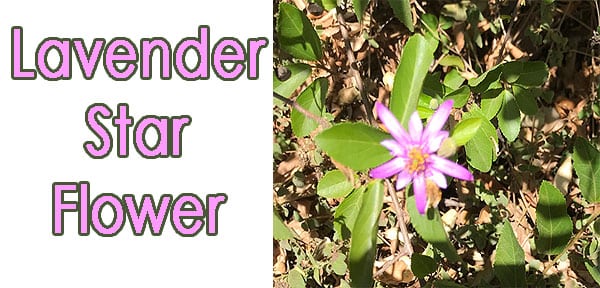Newsletter Articles
Lavender Star Flower
By Richard Flowers, ACCNP-Green Thumb Nursery-Ventura
Just the other day, my neighbor showed me a plant in his garden that he didn’t know the name of. This sprawling and scrambling shrub covers a 10 foot area so densely that it provides needed privacy from the road and the house. I told the neighbor it is called Lavender Star Flower. He was quite intrigued and wanted to know more about this plant, so I explained it to him.
Lavender Star Flower is assigned the botanical name of Grewia occidentalis and is named in honor of the English botanist Nehemiah Grew, who is often referred to as the father of plant anatomy. Grew is short for Grewia and occidentails means west as in western hemisphere, where this plant is native to. Lavender Star Flower originates from the southern regions of Africa, just like many other common plants you see around like Lilly Of The Nile, Society Garlic, Ivy Geranium, and Bird of Paradise. Like all other South African native plants, they would thrive here because our climate is similar to South Africa. In its naive habitat, Lavender Star Flower grows in habitats that include evergreen forests, wooded grasslands, coastal dunes, and the arid lands of the Great Karoo. In this part of the world it grows in the southern states of Arizona, California, Florida, and Texas.
The common name, Lavender Star Flower is derive from the lavender 1 inch blossoms which are star-shaped with yellow, filamentous stamens in the center. Following the blossoms, four-lobed berries are formed, this fruit is reddish brown to orange in color and remains on the plant for an extended period of time. By the way, the fruit does not cause any litter issues.
Besides being an important landscape figure in the United States and elsewhere in the world (more on landscape uses later), Lavender Star Flower sports some pretty amazing other uses. In its native habitat, both livestock and wild animals alike graze on its leaves as do several species of butterfly. Birds and mammals consume the fruits. In some regions, the fruit is dried and later boiled in milk to create a beverage or to make flavored yogurt. The wood is used for spear shafts and to fashion bows. Bark may be pounded and used for shampoo, or boiled and used to treat wounds.
In the garden, Lavender Star Flower is a compact, fast growing, evergreen, shrubby, and sprawling wonder that can be used in the landscape in a myriad of ways. You can train it to become a small tree for people who have limited space or in a patio and it can make a handsome container subject or a picturesque bonsai specimen. When allowed to grow as a tree it will reach a maximum size of about 9 to 10 feet in height and spread. Contrast that with the pruned bonsai form of no more than 10 inches, and you’ll appreciate the versatility of this all around plant. Lavender Star Flower does not have an aggressive root system that will cause problems with sidewalks, making it suitable for planting near walkways and buildings. It is also attractive to butterflies, hummingbirds, bees, and birds because of the plentiful nectar it produces. Other ways this species could be used are if you plant them 4 feet apart it could be clipped into a tall hedge 6-10 feet tall. Because of its strong and flat growing nature, I personally think that Lavender Star Flower is most impressive and looks cleaner when grown and trained along a warm fence, wall or espalier in narrow areas, giving a boring, flat area color, texture, and greenery. Believe it or not, this remarkable plant can also be used as an attractive ground cover when the upright growing stems are removed.
Lavender Star Flower prefers full sun, which promotes the best growth and more robust blooming, however, it will tolerate shade as well. Ideal planting locations are those with a western or southern exposure. For optimal growth, fertilize three times per year with an acid-based fertilizer. Lavender Star Flower will grow in most soil types but it should be fast draining. In alkaline soils, the plant may develop yellow leaves, a symptom of iron chlorosis. Applications of an iron supplement will correct this problem. It is best to keep the soil moist and do not allow it to completely dry out, however it can actually tolerate some drought and some freezing temperatures. This species can be pruned heavily, as needed at any time of year. To promote flowering, cut back immediately after blossoms have dropped. This will also maintain a good overall shape.
We usually have this versatile plant as well as other cool and interesting products for your to fancy. Stop on by your favorite Green Thumb Nursery, we will be happy to help. To be sure we have that treasured item(s) you are looking for, please call ahead.
Do you like what you see? Sign up for our weekly newsletter to get content like this every week!

